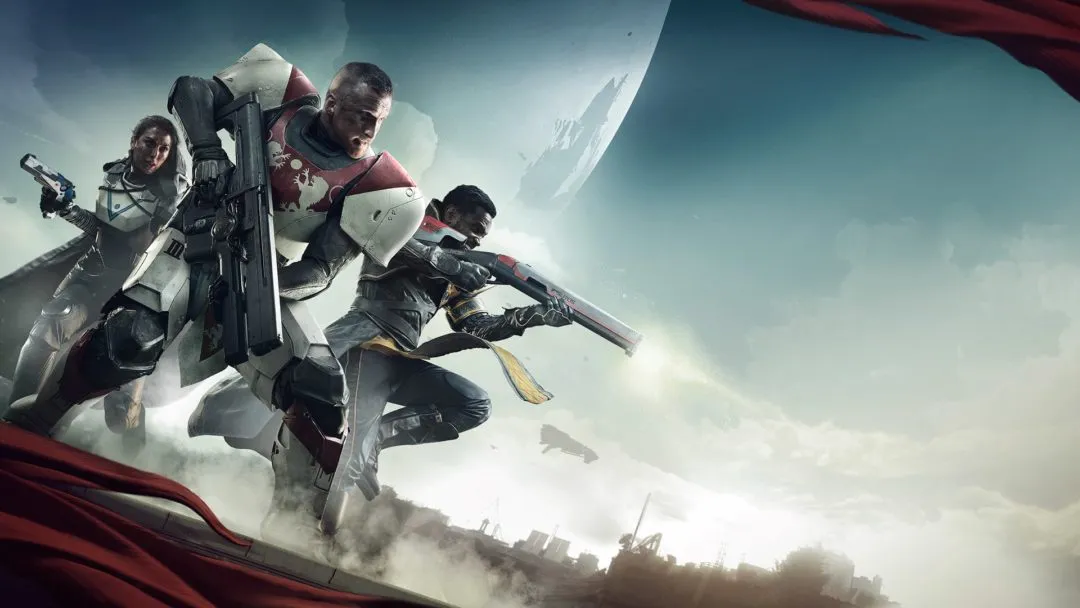
If I had a double bacon cheeseburger for every forum post titled “Why do people [still] play World of Warcraft?” then I would have died of a coronary a year before The Burning Crusade went into beta. Now, mostly these posts are from basic internet-level malcontents and trolls, or people who can’t grasp the idea of different people having different personal tastes. But I want to take the question seriously for a minute, partly so that you can just drop a link to this article the next time one of those threads appears, but mostly because I think that hopeful MMO game designers might be asking themselves the same thing.
Ten million subscribers. At $15 a month each, that comes to $150 million a month and 1.8 billion a year. If you could capture just one in ten WoW users and get them to jump to your MMO, you’d be a massive success by industry standards. I know you want to. Here is my advice for the next developer who comes along with a head full of ideas and dollar signs in his eyes:
Broad System Requirements
The WoW juggernaut proves that graphics take a backseat to gameplay for most players. Your game doesn’t need to look like 8-bit warmed over, but it does need to scale down gracefully to the low end of the spectrum if you want to take a bite out of the WoW user base. Yes, sexy screenshots help at launch day, but if the game looks wrong and runs slow on the average machine then you’re destined to be a minor player in the MMO world.
Social Tools
MMO games are social by nature, but WoW benefits a great deal because people join simply because that’s what all of their friends are playing. Stomping around Northrend with your friends is a perfectly legitimate way to spend an evening. You can joke and gossip and bitch about work and school while sitting around your favorite restaurant, or you can have the same conversation while fighting a Flesh Giant or traversing Zul’Drak. I know the average MMO looks like an RPG with a chat bar, but there’s a lot more going on here than just chat. If you want to knock WoW off its perch, you need a way to make that Northrend conversation as seamless as possible. You need to give players lots of tools to acquire and connect with friends while filtering out irritants and idiots.
Strategic Combat
People dismiss WoW as a “mindless clickfest” but the truth is that the game is not multiplayer Diablo. The game feeds you new combat abilities at a steady rate, so that a new one opens up just as your existing skill set is starting to feel a little tired. There are a lot of different enemies that require different approaches. The combat will get old eventually, but for people that like combining powers and experimenting with different character builds it can offer many hours of entertainment. Your upcoming WoW-killer needs to be able to offer a variety of combat experiences, from complex hot-key driven action strategy (Rogues in WoW) to casual point-and-click for people who like to play while watching American Idol. (Hunters in WoW.)
Exploration
What few MMOs seem to grasp is that being able to walk from one end of a massive gameworld to the other is deeply satisfying to people with a sense of wanderlust, and the effect is often ruined if you break the world up into little playpens connected by loading screens. WoW has many different areas with unique music, mood, lighting, monsters, architecture, cities, wildlife, and flora. There is a ton of content to consume here, and lots of players derive satisfaction from taking the world tour. The game creates the impression that there’s always another cool landmark or impressive vista just over the horizon. If you want people to stick with your game, you need to give them stuff to look at. A lot of stuff. It’s not about square mileage, it’s about seamless variety and spectacle.
Gathering
The idea of traveling a gameworld and picking up stuff has been with us more or less since the dawn of gaming. Maybe it’s our hunter-gatherer instincts. Maybe we just like finding treasure. Whatever the reason, people love acquiring great big heaps of loot, and WoW has a large number of ways to do that. Gathering herbs, mining, fishing, and skinning are all ways to line your backpack with cool stuff without ever needing to fight anything. The treasure is just laying around the world and all you have to do is get out there and pick it up. You need your game to entice people to play it by drawing them into the wilderness with a trail of useful resource goodies.
Crafting
There is something compelling about making a bit of game content and inserting it into the world. You might sell it, use it, or give it away. It’s yours. You made it and it had your name on it. I’ve never been happy with any of the crafting systems I’ve tried, but the crafting in WoW keeps a lot of people amused. This is one area where you can best WoW if you’re willing to put the time into it. People want to create interesting and visually appealing items. Giving them the same level of control over the stuff they make that you give them over their avatar will make people want to make items not just for their intrinsic value in gold or damage output, but for their artistic value as well.
Character Building
The amount of variety in WoW is staggering. The different sides, races, classes, and areas of specialization within each class mean that there is always something new to try. There are layers of depth that let players build their character according to their own concept or play style. You need to offer your players lots of choices that lead to lots of different gameplay. If you start with “do I use fireballs or a sword?” then you’re thinking too small.
Auctioning
Some people get addicted to Ebay. The wheeling and dealing gives them a thrill, and then there’s the joy of having new stuff appear on your doorstep. The auction house in WoW can offer that same experience, and many players enjoy making money by buying low and selling high. They shop mid-week when prices are lower and then sell their goods over the weekend when demand increases. They track drop rates and usage patterns to get a feel for when things will be needed. The auction in WoW is superb, and functions as an economic day trading mini-game for people with the right financial disposition. Make sure your auction system is up to standards, or your world will be filled with people spamming chat in all caps looking for buyers or sellers. This breaks immersion, interferes with the social layer of the game, and frustrates the people trying to do business.
PvP
There aren’t many MMO games that don’t have player-versus-player action in some form or another. It’s an activity, and a crucial one. Many players build their characters for the express purpose of destroying other characters on the field of battle. Other people build their character because they enjoy the process of building. You need to let both of these people have fun without cannibalizing each other’s gameplay. The PvP player should be given an outlet where they can meaningfully compete for rewards, and the builder should have the ability to opt out of the ganking and corpse-camping.
Story
It’s true that a vast majority of MMO players are filled with epic levels of apathy towards the story in the game. They click on a quest dude, do the quest, and run off again without reading a single line of prose. But WoW has robust (by MMO standards) storytelling and the NPCs generally try to make it worth your while if you take the time to read what they have to say. You might be tempted to cut corners here, but a lot of players enjoy knowing that they inhabit a good story, even when they’re fuzzy on the specifics.
Bugs
Enough MMOs have staggered into the fray before they were ready and ended up turning hype and anticipation into bad press and ill will. I would think that their failures ought to be enough to convince you to complete and then polish your MMO before you hit the launch button. You can only launch once.
Far too many MMO games will simply lock onto two or three items in the WoW activity list and decide that, “this is what WoW is all about.” They build a game around those simple elements and neglect the others, and then wonder why their game is an empty wasteland while the population of WoW is more than double that of the entire country of New Zealand.
People dismiss MMO games as “grinding” or a “leveling treadmill,” but the really successful games are more like a health club with a broad selection of exercise machines than a single treadmill. Yes, there is a lot of repetition, but you can jump from one (repetitious) activity to another to keep things interesting. In the broadest sense, the activities in these games stimulate the part of your brain that enjoys creating order from chaos by getting stuff done. Only instead of doing useful stuff like the dishes or your homework, you’re doing stuff like cleaning out rat infestations, gathering up resources, and building items. In the real world, the war against entropy isn’t nearly as swift or as gratifying. The stuff you’re getting “done” starts as short-term goals that lead to longer-term goals that lead to really long-term goals. You’re always on the threshold of getting something done and getting your next reward. (And your next goal.)
It may look like players just stand around killing monsters over and over (because they are) but that’s not the heart of the game and not the source of motivation. Give the player lots of goals and you’ll go a long way to making a game they never want to quit. Then sit back and let the cash roll in, you greedy, life-sucking, career-ruining, homewrecking bastards.
Be sure to send me an invite when you reach beta.
Shamus Young is the author of Twenty Sided and the vandal behind Stolen Pixels. He played as a hunter in WoW, although he never stuck around long enough to hit level 40.






Published: May 29, 2009 09:00 pm